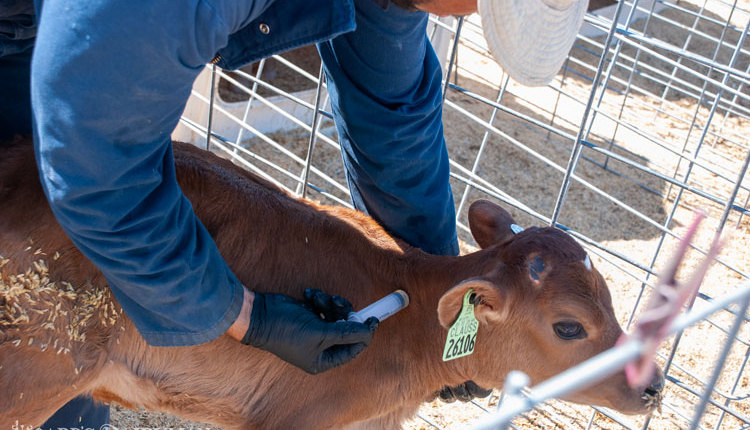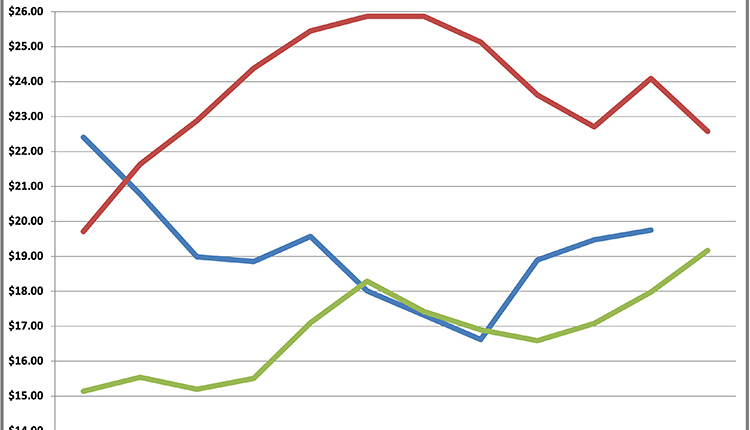Genetic evaluations are at a crossroads. Both the science of genomics and government's funding limitations are reshaping the field. As decisions are being made on a new structure to fund and calculate evaluations and ensure data flows into the system, we continue to believe all industry partners, including grassroot breeders, deserve to see original agreements before they are signed.
After nearly two years of committee work, all the right things finally were said by genetic leaders attending the latest Council on Dairy Cattle Breeding meeting. Granted, it took a USDA deputy administrator's comments at the gathering to bring clarity to the situation . . . that, yes, this should be a public process, and people should see the details as USDA transfers the industry's database for genetic evaluations to the private sector. (For more details, you can find a full meeting report in the December issue on pages 794 and 795.)
In all fairness, a new agreement governing genetic evaluations has not been easy to negotiate. Many competing interests between the three major Council on Dairy Cattle Breeding players (A.I., DHI, and the breeds) must be considered before a deal can be struck. Despite their differences, all parties must remember that, ultimately, the dairy producer . . . through semen costs, milk testing fees, and breed association activity, will bear any added costs.
We understand pressure is mounting to get a deal in place. The self-imposed April and July deadlines for a new Business Plan and Cooperative Agreement have been openly shared as target dates to finalize agreements. But that pressure shouldn't be so great that we need to agree to a hastily assembled deal that lacks critical review.
USDA's deputy administrator for the Agricultural Research Service agrees. He stated it is his goal to have a new agreement signed this year. However, he admitted there has to be enough time so the process can be open and transparent. If it takes more time, USDA officials are willing to take it. And so should our industry representatives.
The clock is now ticking if genetic leaders want to meet their own deadlines. While they have said complete agreements would be available on the Council's website and for any industry partner who wishes to disseminate the information, we are still waiting for our first copies so we may share them with you. Up until this point, there hasn't been clear communication. Everyone has pledged to do better, but we need to see it in practice.
After nearly two years of committee work, all the right things finally were said by genetic leaders attending the latest Council on Dairy Cattle Breeding meeting. Granted, it took a USDA deputy administrator's comments at the gathering to bring clarity to the situation . . . that, yes, this should be a public process, and people should see the details as USDA transfers the industry's database for genetic evaluations to the private sector. (For more details, you can find a full meeting report in the December issue on pages 794 and 795.)
In all fairness, a new agreement governing genetic evaluations has not been easy to negotiate. Many competing interests between the three major Council on Dairy Cattle Breeding players (A.I., DHI, and the breeds) must be considered before a deal can be struck. Despite their differences, all parties must remember that, ultimately, the dairy producer . . . through semen costs, milk testing fees, and breed association activity, will bear any added costs.
We understand pressure is mounting to get a deal in place. The self-imposed April and July deadlines for a new Business Plan and Cooperative Agreement have been openly shared as target dates to finalize agreements. But that pressure shouldn't be so great that we need to agree to a hastily assembled deal that lacks critical review.
USDA's deputy administrator for the Agricultural Research Service agrees. He stated it is his goal to have a new agreement signed this year. However, he admitted there has to be enough time so the process can be open and transparent. If it takes more time, USDA officials are willing to take it. And so should our industry representatives.
The clock is now ticking if genetic leaders want to meet their own deadlines. While they have said complete agreements would be available on the Council's website and for any industry partner who wishes to disseminate the information, we are still waiting for our first copies so we may share them with you. Up until this point, there hasn't been clear communication. Everyone has pledged to do better, but we need to see it in practice.










